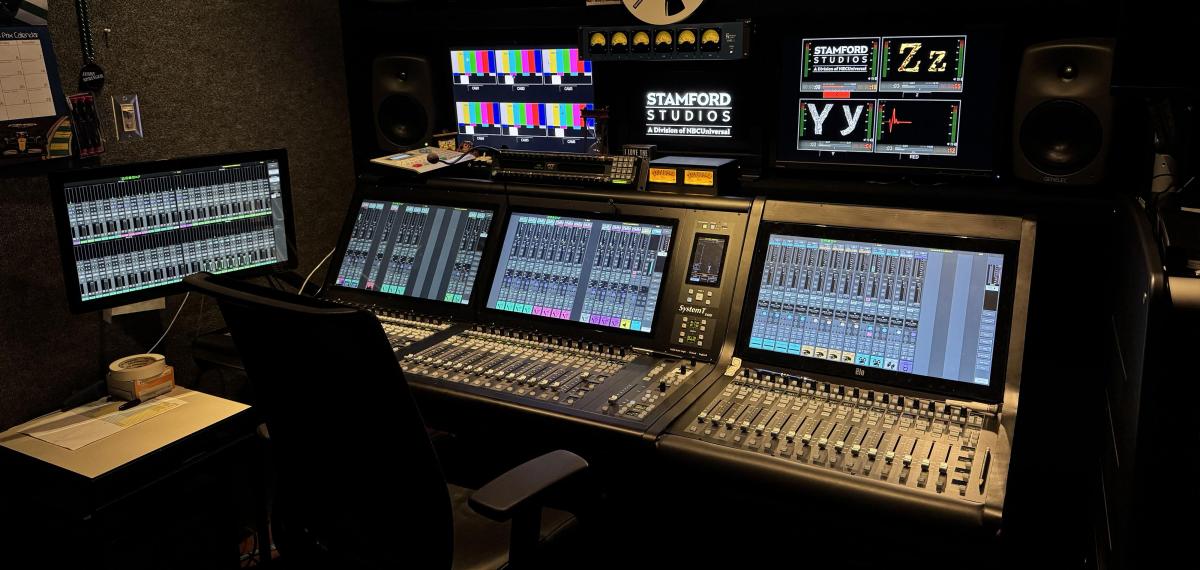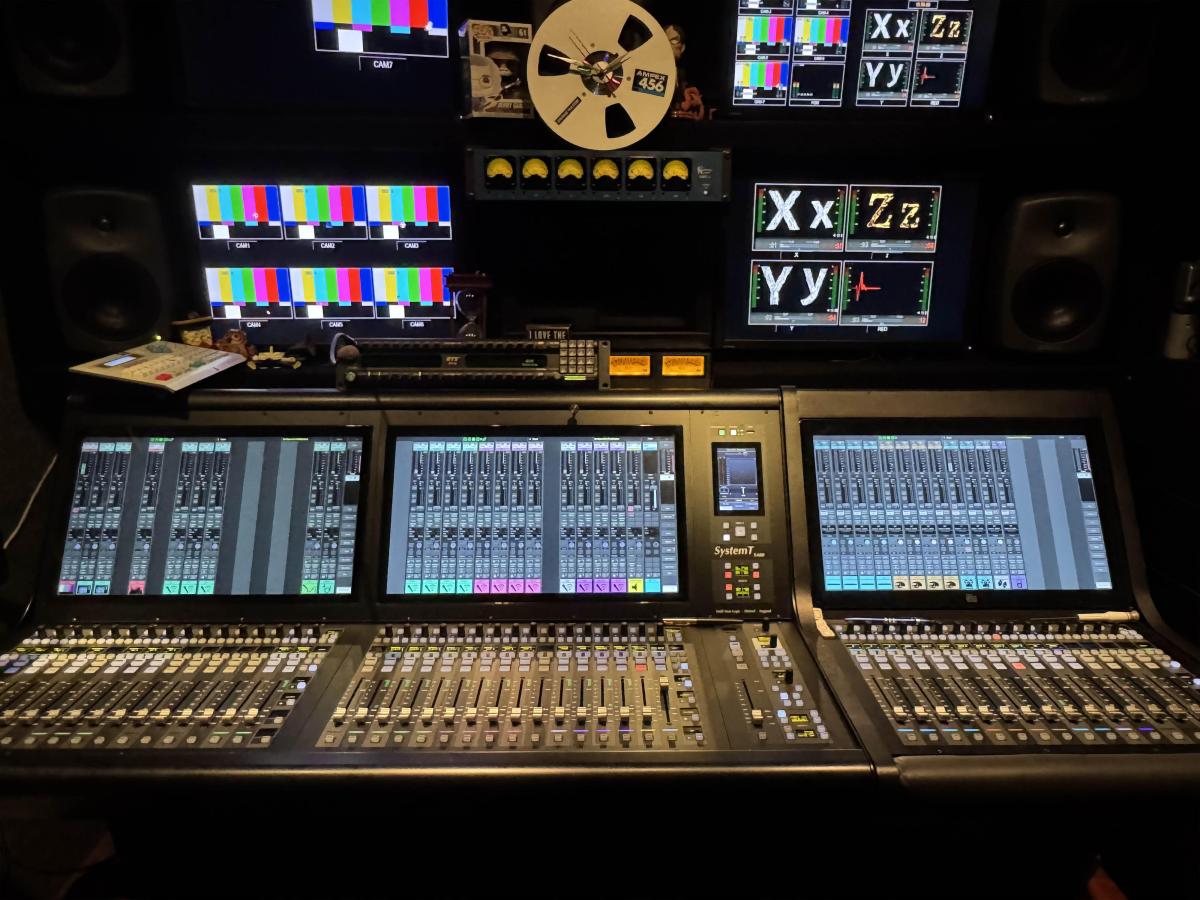He continues, “I've worked on a lot of different consoles in a lot of different places, and I've never seen an audio console with just one knob on the fader strip. One of the most important things for me is the speed with which I can access things like microphone trims. The shows are very dynamic and there is a lot going on, so I’m controlling levels and EQ on the fly. I've had no issues getting to everything at speed.”
“That single knob does wonderful things in combination with the graphic presentation,” chief engineer Barry Minnery observes. “And you can also use your fingers on the touch screen to affect things, which is helpful, too. It's all very accessible. Once you start using it, it's honestly pretty intuitive.”
Because Alexander often must react quickly to events on the shows, the S400 surface has been seamlessly integrated with a pair of System T Fader Tiles to the right of the master section, putting a total of 64 channel faders under his fingers. “It can go from a whisper to a scream very quickly, so having the ability to expand the fader count when required is huge,” he explains.
On a typical show, Alexander is managing 18 microphones with another 10 audience microphones hanging from the lighting grid in the studio, which seats about 120 people. “Very often we will shoot guests in the wings,” he reports. “Very often someone leaves in anger, and they've been known to tear off their microphone and storm off to a green room. There are shotgun mics on the handheld cameras, and of course the cameras follow them. So those shotgun mics can save me sometimes, otherwise, I have no audio to play with.”
System T’s onboard dynamics processing provides an extra layer of control on such a dynamic show. “Having two channels of compression on each channel strip is wonderful,” Alexander comments, “because one I use as a normal compressor to level out, and then compressor two is the drop-dead, hard limiter, which I really need. It took a little bit of tweaking in the beginning to get it how I wanted it to sound, but that is a wonderful tool to have for what we do.”
Beyond the microphone inputs, he continues, “We have four playback sources for rolling in tape packages, three guest remote video calls in and out, and mix minuses on those. We send feeds to the PA, there are feeds to a producer area backstage and feeds to an area where there are guests backstage.”
The new System T was delivered with SSL’s SB 32.24 SuperAnalogue Stagebox and has been integrated into the facility’s existing Dante network. “Between the Dante network and the ability to move things around with Dante on the board, we don't do patching anymore. And we used to split everything at the old stage box, but now we just use that gain-compensated output out of the new stage box. It has totally simplified things,” Minnery says.
To interface with the control room’s legacy infrastructure, the new system also includes SSL’s MADI-Bridge units. “I really liked the little display,” Minnery says. “It was a great way for me to troubleshoot the workflow as we were doing the switchover between consoles. Plus, they're dual power supply, and we like a lot of stuff to be redundant. We have a second Tempest Engine, and we have a backup computer for the control surfaces. We’ve got a fair amount of redundancy, because we really can't have downtime.”


